new posts in all blogs
Viewing: Blog Posts Tagged with: Educational, Most Recent at Top [Help]
Results 51 - 75 of 152
How to use this Page
You are viewing the most recent posts tagged with the words: Educational in the JacketFlap blog reader. What is a tag? Think of a tag as a keyword or category label. Tags can both help you find posts on JacketFlap.com as well as provide an easy way for you to "remember" and classify posts for later recall. Try adding a tag yourself by clicking "Add a tag" below a post's header. Scroll down through the list of Recent Posts in the left column and click on a post title that sounds interesting. You can view all posts from a specific blog by clicking the Blog name in the right column, or you can click a 'More Posts from this Blog' link in any individual post.

By: Jerry Beck,
on 7/25/2013
Blog:
Cartoon Brew
(
Login to Add to MyJacketFlap)
JacketFlap tags:
Henry Selick,
Educational,
Chris Sanders,
Eric Goldberg,
David Silverman,
Pete Docter,
Mike Mitchell,
Ron Clements,
Kevin Lima,
Kirk Wise,
Add a tag

If you were unable to attend the SIGGRAPH Keynote panel on Monday, featuring nine distinguished animation directors, you’re in luck because the 92-minute discussion is posted below.
The panel, entitled “Giants’ First Steps,” focused on the early careers of the following artists: Pete Docter (Monsters, Inc., Up), Eric Goldberg (Pocahontas, Fantasia/2000), Kevin Lima (Tarzan), Mike Mitchell (Shrek Forever After, Alvin and the Chipmunks: Chipwrecked), Chris Sanders (Lilo & Stitch, How to Train Your Dragon), Henry Selick (Nightmare Before Christmas, Coraline), David Silverman (The Simpsons Movie), Kirk Wise (Beauty and the Beast, Atlantis: The Lost Empire) and Ron Clements (The Little Mermaid, Aladdin).
When heading to the beach, the last thing I want to hear about is a shark close by, but it seems like sharks are taking over aquariums, the big screen, and bookshelves all across the country. Even in our office, we have all fallen in love with our newly released spring title Shark Baby by Ann Downer, illustrated by Shennen Bersani.
Shark Baby follows one little shark as he embarks on his ocean-wide journey to find out what kind of shark he is. This book includes other fun sea inhabitants such as various shark species, sea lions, an octopus, and a “mermaid?” Shark Baby will melt the heart of any reader regardless of their original feelings about sharks.


An article from the Wall Street Journal recently reported the new trend in aquarium attractions, diving with sharks! Aquariums all across the globe are beginning their own diving programs including Australia, Hong Kong, Malaysia, New Zealand, Thailand, Singapore, and South Korea. There are even a few aquariums in the United States where shark diving is offered such as Cleveland and Denver. The Georgia Aquarium offers divers a chance to swim with the biggest fish species in the world, the whale shark. This up close and personal encounter with sharks does have a few perks. The environment is more controlled, thus sharks are well-fed and used to the presence of divers. Also, it cuts down on the logistics of traveling to distant dive sites and guarantees a face to face meeting with these creatures. Although this seems like an exciting adventure, I don’t think I will be including it on my bucket list any time soon. You can read the full article by following this link:
http://blogs.wsj.com/scene/2013/06/05/swimming-safely-with-sharks/
If diving with sharks is too much for you, select cities are showing theIMAX 3D film Great White Shark, released May 24. The film supports conservation efforts for the Great White Shark and hopes to tell the “true” story about this often misunderstood creature. This film was three years in the making and takes viewers all over the world to different Great White hot spots including: Los Angeles, New Zealand, South Africa, and Guadalupe Island. Filmmakers hope to show their audiences that the Great White Shark is becoming an endangered species, and that they are not monsters, rather they are just trying to fulfill their position at the top of the Ocean’s food chain. You can check out the trailer for the film using the following link:
http://greatwhiteshark3d.com/trailer/

After looking at the shark craze that is taking over the summer, I still hope I don’t come face to face with a shark anytime soon. Shark Baby‘s illustrations are the closest I want to be to a shark. For the more courageous individuals, I definitely recommend checking out your nearest aquariums for shark exhibits, Great White Shark showings, or dives! Other suggested titles on this topic from Sylvan Dell Publishing: The Most Dangerous and Ocean Hide and Seek.
*Author: Ann Downer and Illustrator: Shennen Bersani just finished two book presentations and signings this past weekend in Cambridge, MA at Porter Square Books and in Mystic, CT at the Mystic Aquarium. Bersani will have another signing June 29 from 11-1pm in Center Harbor, NH at Bayswater Book Company.


Today started out as a typical day in the office, but by mid-morning we were in rescue mode.
On Wednesday mamma mallard and ten baby ducklings were wandering around the grass outside the Sylvan Dell office building. With a small pond nearby and a downpour of rain the day before it is not uncommon to see waterfowl outside our windows on occasion. Baby ducklings however, were too cute in a line behind their mother that we couldn’t help but watch as they waddled around.
When our editor and Buddy the office dog went outside this morning, she found that mamma duck was no longer with her babies and there were only four still quacking, six were no longer living. Stuck in the landscaping, and unable to get out of the well around a tree, the staff decided to help.
Mamma duck was quacking away in the nearby pond and so we tried a ramp, but they were afraid and the ramp was steep. Next we worked together to herd the babies into a box so that we could deliver them to safety. After several tries and many strategies the three of us were able to get three of the babies into the box and one baby was actually able to make it out of the well and ran all the way to the pond to quickly jump in. Mom swam over to her ducklings as they all hopped into the water.
It was a successful reuniting, and we were very happy to bring the family back together. We must thank Jennifer Keats Curtis for writing the books Baby Owl’s Rescue, and Animal Helpers: Wildlife Rehabilitators, she gave us the inspiration and knowledge to save these babies from harm.


In Animal Helpers: Sanctuaries you meet Lisa the pig, a 700 pound loveable animal that just got too big to stay with her owners. Sanctuary One’s newest resident pig Jigsaw is just as loveable and very smart. Just watch how well mannered this pig is:
Sanctuary One provides the community with a place to connect with nature and meet animals that children or adults may not have the opportunity to meet otherwise. They are very passionate and we hope you enjoy the video, and meeting them in the book Animal Helpers: Sanctuaries.
The Animal Helpers series by Jennifer Keats Cutis is a great way to introduce children to the challenges and rewards that a career helping animals entails. Each book in the series features work of special organizations and caretakers like Sanctuary One. These organizations are able to use the book as a fundraiser; it is expensive, and requires a lot of work to care for a farm of formerly homeless animals.
We at Sylvan Dell are happy to feature the great work of not only Sanctuary One, but also the other Animal Helpers. If you, or your children are interested in caring for animals there are organizations all across the country that need support and volunteers!


Among the most important things an animator must keep in mind when animating is making sure that drawings read clearly to the viewer. By using strong keys, solid staging, and clear silhouettes, the audience can understand the actions that a character performs onscreen.
Legendary Disney animator Fred Moore, known for his broad yet overwhelmingly appealing drawings, took that idea one step further in his animation. Not only did he have strong silhouettes in his keys, but he ensured that his animation had strong silhouettes throughout a scene. The clarity of his silhouettes remained even in the breakdowns and inbetweens.
In this scene from Pluto’s Judgement Day, Moore animates Mickey struggling to regain order after Pluto, covered in mud, chases a kitten into his house and wrecks havoc:
Despite how frantically Mickey is moving around in this shot, as well as being obscured by Pluto and the mud effects, his action is still clear because Moore kept the silhouettes intact from drawing to drawing for most of the scene. The negative space between Mickey’s limbs, head and ears as well as the kitten’s paws, ears and tail help bring out the poses. Further, he exaggerates his poses for readability, especially during anticipations. Moore also uses strong arcs, both in Mickey’s torso and his arms, to visually guide the viewer where the actions is going next.
I went over the whole scene and blacked out Mickey and the kitten to show their silhouettes more clearly:
Disney story artist Mark Kennedy talks about silhouettes in greater detail on his blog.
It's May already and I forgot about the blog, I gave up on a new portfolio site for now and on Tumblr. I have been working a lot though, so hopefully this is a good excuse!
This is an old drawing, maybe some of you will remember it. It started as a watercolour and traditional collage and was then forgotten on my old external hard drive. I found it and heavily reworked it in Photoshop. The original never really met my expectations, but now she's quite a character. Maybe, she has a story to tell. For now we're both enjoying the rain, hoping spring will last a little longer...
Read the rest of this post
After illustrating "Tartarin de Tarascon" for Eli Readers, this past November the publisher called me again. This time to work on "Anne of Green Gables." The cover was my favourite piece, but here is also a small selection of the interior pages.
I worked on the illustrations in a slightly different way. The lines you see on the characters are the actual pencil lines of my roughs. I wanted to use a stronger graphite rendering, but time was against me. Hopefully on the next book!

By: Jerry Beck,
on 4/24/2013
Blog:
Cartoon Brew
(
Login to Add to MyJacketFlap)
JacketFlap tags:
Denis Dutton,
Preston Blair,
Scrat,
Peter Thaler,
Stephen Jay Gould,
WALL·E,
Character Design,
Ideas/Commentary,
Cartoon Culture,
Educational,
Yoda,
Trolls,
Pixar,
E.T.,
Ice Age,
Finding Nemo,
Add a tag
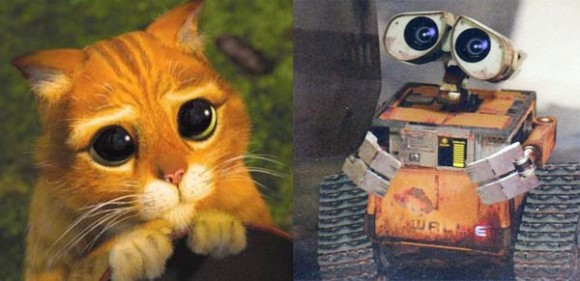
Over on question-and-answer website Quora, someone posted a very simple question: Which is the cutest cartoon character ever created? The answers from Quora members cover a broad spectrum, some more obvious (Tweety, Pokemon, Pooh) and others less so (Gertie the Dinosaur, Night Fury from How to Train Your Dragon).
So what makes a cartoon character cute? You could reduce the answer down to a few basic characteristics: big eyes and head, fluffiness, warmth and chubbiness. “Cuteness is based on the basic proportions of a baby plus the expressions of shyness or coyness,” wrote Preston Blair in Advanced Animation. According to Blair, other cute traits include:
- Head large in relation to the body.
- Eyes spaced low on the head and usually wide and far apart.
- Fat legs, short and tapering down into small feet for type.
- Tummy bulges—looks well fed.

But cuteness is far more complex than even Blair’s set of rules; some consider E.T., Yoda and WALL·E to be the epitome of cute, despite their furless, odd appearances. Cuteness and a character’s perceived hugability aren’t always determined by aesthetic appeal. “Cuteness is distinct from beauty,” wrote Natalie Angier for The New York Times. “Beauty attracts admiration and demands a pedestal; cuteness attracts affection and demands a lap.”
In essence, any creature deemed cute is one that speaks to our nurturing instincts. The cuteness of an infant can motivate an adult to take care of it, even if the baby is not a blood relation. Even more, studies have found that humans transfer these same emotions to animals (or even inanimate objects) that bear our similar features. Finding Nemo combined all of these psychological elements perfectly—you can’t hug or cuddle a fish, yet adorable Nemo, with his fin damaged from birth and his human-like facial features, appeals to our caregiving instincts. In fact, every character in Pixar films, whether it’s a clownfish or a car, features forward-facing eyes, the most crucial feature for achieving an emotional connection with the audience.
But with any extreme comes another. If a character is too cute and sugary sweet, the audience can develop skepticism. “Cute cuts through all layers of meaning and says, ‘Let’s not worry about complexities, just love me,’” philosopher Denis Dutton told The New York Times. It is for that very reason cuteness stirs uneasiness and sometimes feels cheap.
After all, the adorable, smiling face of a child can hide the havoc he just wreaked by breaking all of his toys. “Cuteness thus coexists in a dynamic relationship with the perverse,” writes Daniel Harris in his book Cute, Quaint, Hungry And Romantic: The Aesthetics Of Consumerism . You could call this the Gremlin Effect—a character with an underlying creepiness. Troll dolls (which were recently acquired by DreamWorks Animation) and Cabbage Patch Kids are the inexplicable result of this paradox.
. You could call this the Gremlin Effect—a character with an underlying creepiness. Troll dolls (which were recently acquired by DreamWorks Animation) and Cabbage Patch Kids are the inexplicable result of this paradox.
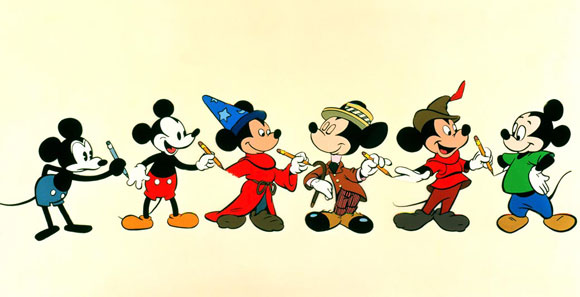
There’s no denying a cultural need to pigeonhole and perfect the attributes that could be popularly deemed cute. In his fantastic short essay on Mickey Mouse, biologist and historian Stephen Jay Gould asserts that Mickey’s changing appearance over time is a physical evolution that mirrors cultural attitudes toward cuteness. As the Benjamin Button of animated rodentia, Mickey’s eyes and head have grown larger, his arms and legs chubbier. Mickey has become more childlike and, most would say, more cute and less rat-like. Mickey isn’t the only character to undergo this transformation. The teddy bear, first sold in 1903, started out anatomically similar to a real bear, with a long snout and gangly arms. Today’s teddy bears more closely resemble the Care Bears, with pudgier features and colorful fur.
Audience don’t always need Mickey’s goofy grins and huge eyes to connect with a character’s cuteness. Pictoplasma, the artists’ network and conference that celebrates characters extracted from context, reveals how sometimes it’s our own invented narrative that blasts a character into hall-of-fame cuteness. As Pictoplasma co-founder Peter Thaler said explains, “It’s a horrible example, but Hello Kitty has no facial expression. You don’t know if she’s happy or sad; you just see these two dots. You’re projecting all the narration, the biography.”
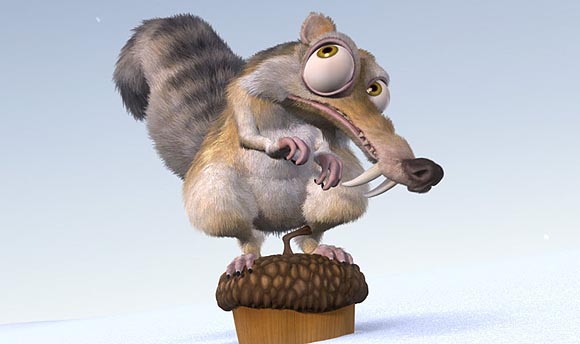
Our ideals of cuteness continue to evolve, a trajectory in visual culture that has birthed Hello Kitty and Japan’s kawaii movement, Giga Pets, Furby, Elmo and Slimer. Often the most exciting, memorable cute characters are the ones who bear negative traits that reveal the vulnerability. Scrat, the saber-toothed squirrel from Ice Age, is adorable and loved by audiences even more for his greed. Cuteness, perhaps then, is not just about an objective set of physical features—it’s also about a behavior that compels audiences and connects us emotionally to the character.

By: Jerry Beck,
on 4/24/2013
Blog:
Cartoon Brew
(
Login to Add to MyJacketFlap)
JacketFlap tags:
Finding Nemo,
Denis Dutton,
Preston Blair,
Scrat,
Peter Thaler,
Stephen Jay Gould,
WALL·E,
Character Design,
Ideas/Commentary,
Educational,
Yoda,
Trolls,
Pixar,
E.T.,
Ice Age,
Add a tag

Over on question-and-answer website Quora, someone posted a very simple question: Which is the cutest cartoon character ever created? The answers from Quora members cover a broad spectrum, some more obvious (Tweety, Pokemon, Pooh) and others less so (Gertie the Dinosaur, Night Fury from How to Train Your Dragon).
So what makes a cartoon character cute? You could reduce the answer down to a few basic characteristics: big eyes and head, fluffiness, warmth and chubbiness. “Cuteness is based on the basic proportions of a baby plus the expressions of shyness or coyness,” wrote Preston Blair in Advanced Animation. According to Blair, other cute traits include:
- Head large in relation to the body.
- Eyes spaced low on the head and usually wide and far apart.
- Fat legs, short and tapering down into small feet for type.
- Tummy bulges—looks well fed.

But cuteness is far more complex than even Blair’s set of rules; some consider E.T., Yoda and WALL·E to be the epitome of cute, despite their furless, odd appearances. Cuteness and a character’s perceived hugability aren’t always determined by aesthetic appeal. “Cuteness is distinct from beauty,” wrote Natalie Angier for The New York Times. “Beauty attracts admiration and demands a pedestal; cuteness attracts affection and demands a lap.”
In essence, any creature deemed cute is one that speaks to our nurturing instincts. The cuteness of an infant can motivate an adult to take care of it, even if the baby is not a blood relation. Even more, studies have found that humans transfer these same emotions to animals (or even inanimate objects) that bear our similar features. Finding Nemo combined all of these psychological elements perfectly—you can’t hug or cuddle a fish, yet adorable Nemo, with his fin damaged from birth and his human-like facial features, appeals to our caregiving instincts. In fact, every character in Pixar films, whether it’s a clownfish or a car, features forward-facing eyes, the most crucial feature for achieving an emotional connection with the audience.
But with any extreme comes another. If a character is too cute and sugary sweet, the audience can develop skepticism. “Cute cuts through all layers of meaning and says, ‘Let’s not worry about complexities, just love me,’” philosopher Denis Dutton told The New York Times. It is for that very reason cuteness stirs uneasiness and sometimes feels cheap.
After all, the adorable, smiling face of a child can hide the havoc he just wreaked by breaking all of his toys. “Cuteness thus coexists in a dynamic relationship with the perverse,” writes Daniel Harris in his book Cute, Quaint, Hungry And Romantic: The Aesthetics Of Consumerism . You could call this the Gremlin Effect—a character with an underlying creepiness. Troll dolls (which were recently acquired by DreamWorks Animation) and Cabbage Patch Kids are the inexplicable result of this paradox.
. You could call this the Gremlin Effect—a character with an underlying creepiness. Troll dolls (which were recently acquired by DreamWorks Animation) and Cabbage Patch Kids are the inexplicable result of this paradox.

There’s no denying a cultural need to pigeonhole and perfect the attributes that could be popularly deemed cute. In his fantastic short essay on Mickey Mouse, biologist and historian Stephen Jay Gould asserts that Mickey’s changing appearance over time is a physical evolution that mirrors cultural attitudes toward cuteness. As the Benjamin Button of animated rodentia, Mickey’s eyes and head have grown larger, his arms and legs chubbier. Mickey has become more childlike and, most would say, more cute and less rat-like. Mickey isn’t the only character to undergo this transformation. The teddy bear, first sold in 1903, started out anatomically similar to a real bear, with a long snout and gangly arms. Today’s teddy bears more closely resemble the Care Bears, with pudgier features and colorful fur.
Audience don’t always need Mickey’s goofy grins and huge eyes to connect with a character’s cuteness. Pictoplasma, the artists’ network and conference that celebrates characters extracted from context, reveals how sometimes it’s our own invented narrative that blasts a character into hall-of-fame cuteness. As Pictoplasma co-founder Peter Thaler said explains, “It’s a horrible example, but Hello Kitty has no facial expression. You don’t know if she’s happy or sad; you just see these two dots. You’re projecting all the narration, the biography.”

Our ideals of cuteness continue to evolve, a trajectory in visual culture that has birthed Hello Kitty and Japan’s kawaii movement, Giga Pets, Furby, Elmo and Slimer. Often the most exciting, memorable cute characters are the ones who bear negative traits that reveal the vulnerability. Scrat, the saber-toothed squirrel from Ice Age, is adorable and loved by audiences even more for his greed. Cuteness, perhaps then, is not just about an objective set of physical features—it’s also about a behavior that compels audiences and connects us emotionally to the character.
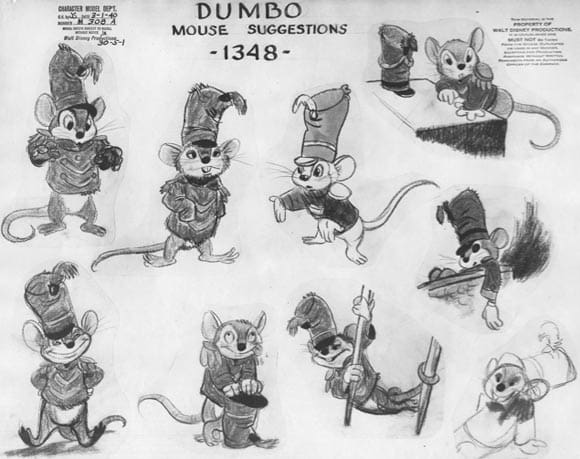
Industry artist Joe Pitt has started a new Tumblr called Straights Against Curves to share “a collection of animation related art, primarily character development, thoughts, and anecdotes that greatly inspire me in hopes to inspire others as well.”
Pitt is the lead character designer on the upcoming Disney series Wander Over Yonder and formerly a director on Gravity Falls. (He’s also a recent Cartoon Brew Artist of the Day pick.)
There’s only a handful of posts so far, but already some valuable insights, such as this observation about how Disney feature characters were developed in the late-1930s/early-1940s compared with today:
The great thing about the old Character Model Department at Disney is that with Joe Grant running it, the concentration was less on solving a final model, but approaching design from a place of story…It was in the model department under Joe’s supervision that they would work with story to help develop the character’s personalities. You don’t see this process much any more. Finding the characters’ traits and personalities are now mostly solved in the story room. This is not a bad thing, it’s just a lot more departmentalized now. I would love to see this structure brought back though, blurring the lines between design and story. It would breed a more collaborative atmosphere I feel.
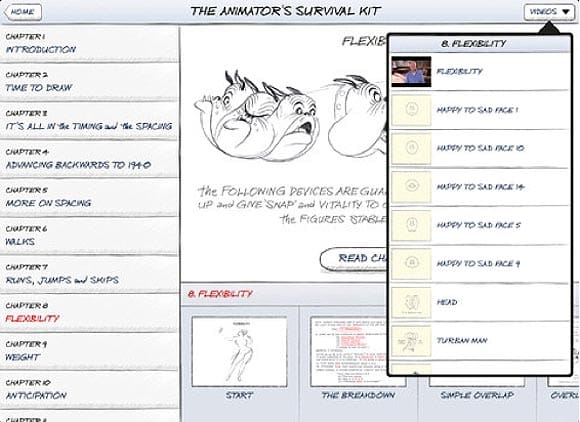
The Richard Williams Animator’s Survival Kit iPad app that we announced a couple months ago is out today. It’s available for $34.99 on the Apple Store, a bargain when you consider the DVD version of the Survival Kit costs nearly a grand. If you’re on the fence about splurging, you can also download a free sample version.

By: sylvandellpublishing,
on 4/17/2013
Blog:
Sylvan Dell Publishing's Blog
(
Login to Add to MyJacketFlap)
JacketFlap tags:
Children's Books,
fun,
picture books,
math,
animals,
sherlock holmes,
educational,
detective,
duck,
Sylvan Dell,
educational books,
logic,
Sylvan Dell Posts,
deductive detective,
deductive reasoning,
for creative minds,
Add a tag

“Eliminate all other factors, and the one which remains must be the truth,” Sherlock Holmes has said about his method of detective work. In Sylvan Dell’s new picture book, Deductive Detective, our hero Detective Duck shows that he’s learned from the best! He dons his best deerstalker hat, his much-too-big magnifying glass, and solves the case of the missing cake with the same methods the pros use!
That is, a style of logical thinking called “deductive reasoning.” In deductive reasoning, someone finds an answer they’re looking for by first finding out what the answer isn’t. When Detective Duck examines the clues and finds out which of his friends couldn’t have stolen the cake, it leads him closer to what really happened!
Of course, you don’t need a weird hat and a magnifying glass to use deductive reasoning. These methods come in handy every day! If you lose a toy, for example (or car keys), you may make your search easier by determining where the item isn’t.
“Oh yeah,” you may say, “I didn’t bring it to my friend’s house; I wasn’t holding it when I walked to the living room, or landed on the moon. I wouldn’t have brought it to my parents’ room or under the ocean or into Mordor.” By deciding where you shouldn’t look, you now have a better idea of where you should.
This kind of logic process happens throughout the day, sometimes without you even being aware of it; you might say your brain is always on the case as much as any detective!
Apply deductive reasoning the next time you’re in the bookstore: subtract the books that don’t meet the highest educational standards, offer pages of activities and facts, offer online supplements, are fun to look at and fun to read! You’ll be left with books by Sylvan Dell like The Deductive Detective!



By: Jerry Beck,
on 4/16/2013
Blog:
Cartoon Brew
(
Login to Add to MyJacketFlap)
JacketFlap tags:
Educational,
The Jungle Book,
Robin Hood,
Milt Kahl,
Bedknobs and Broomsticks,
Shere Khan,
Sir Ector,
Sword in the Stone,
Disney,
Animators,
Tigger,
The Rescuers,
Add a tag
Like a signature, each animator has their own little quirks or trademarks that distinguish their animation from others. Some draw character’s features in a unique way (eyes, hands, etc.), some lean heavily on certain principles or include abstract imagery or gimmicks into their scenes, and some fall back on specific poses or gestures. The “Milt Kahl Head Swaggle” is an example of the latter, and it both intrigues and aggravates me at the same time.
To clarify, the “Milt Kahl Head Swaggle” is when a character (animated by Disney legend Milt Kahl) sort of rattles his/her head from side to side, usually at times when they’re feeling cocky or self-assured. Sort of an “Am I great or what?” type of gesture.
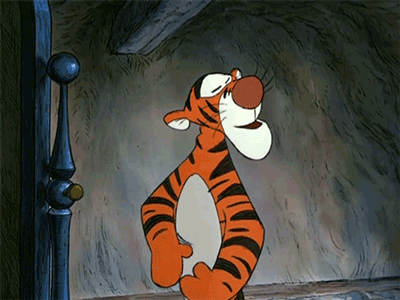
Again, I can’t deny how remarkable an animator Milt Kahl was, but for a long time I considered him to be a really hammy animator in the worst possible sense, and this gesture cemented that idea in me for a good long while.
In a Frank Thomas or Ollie Johnston scene, I could see the wheels turn in the character’s heads and felt that the characters were sincere, emotionally-driven personalities. I never felt that in the majority of Kahl’s characters. A lot of his characters are like actors on a stage, projecting themselves a bit too far in their performances.
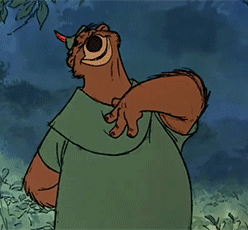
But at the same time, he uses this gesture for a reason, and it works well in every scene he implements it. He only used it on broader, more caricatured characters like Tigger, Sir Ector or Brer Rabbit, characters with strong egos and a cocky sensibility, and the gesture defines the character’s personality in the most simple and direct way possible.

Much like finding an often-reused piece of animation or sound effect in a Disney film, my dislike for it came only from repeated viewings. Because we live in the age of DVDs, Netflix and Quicktime files, we now can have a studio’s entire library literally at our fingertips, able to survey and dissect the content any way we choose, including surveying an animator’s entire forty-year output front to back and taking shots completely out of context like I have here.
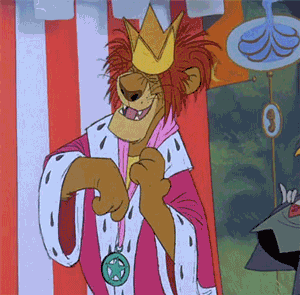
Another thing I realized over time is that Kahl seemed to prefer being a broader animator. For years he was stuck with the most difficult and seemingly less interesting assignments, which the rest of the animators couldn’t pull off because they weren’t as good of a draftsman as him. For example, he clamored to work on characters like Captain Hook but was stuck doing Peter Pan and the Darling children, or with Alice instead of the more zany, off-the wall characters that populate the rest of Alice and Wonderland. He would end up designing a lot of these other characters, but never get to animate most of them.
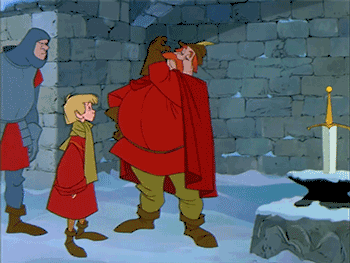
Luckily for him, by the 1960s, Kahl’s creative shackles were loosened and he was back to doing broader animation, and like a free spirit, he went all out on each character, from The Sword in the Stone through The Rescuers. Each character he animated during that period overflowed with energy, all of which was probably pent up inside him for so many years. His days of princes and realistic little children were over, and for the rest of his career he was able to let loose, have fun and do the things he wanted to do.
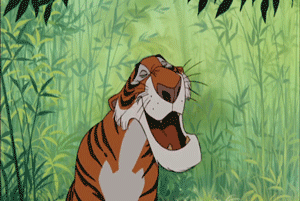
Milt Kahl knew he was a good animator, and he wasn’t afraid to show it through brash flourishes of animation. The head swaggle, corny and over-the-top though it may be, not only defines those Disney characters, but also defines the self-assured Kahl himself.
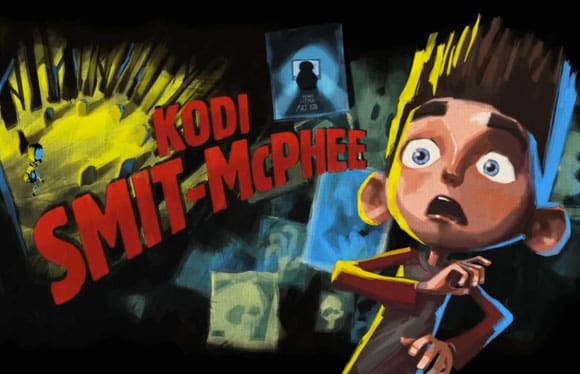 Art of the Title, an addicting resource with dozens of high-def clips, recently posted their Title Design Finalists for the SXSW 2013 Film Awards. Of the animated title sequences, The Man Who Shook the Hand of Vicente Fernandez and ParaNorman are standouts: the first for its use of vintage woodblock typeface and spaghetti western aesthetic, and the latter for its 1950s horror-inspired design. Both sequences are richly nuanced, and imply an understanding of the history of typography and graphic poster design. This applied visual knowledge is the direct result of the collaboration between animators and designers.
Art of the Title, an addicting resource with dozens of high-def clips, recently posted their Title Design Finalists for the SXSW 2013 Film Awards. Of the animated title sequences, The Man Who Shook the Hand of Vicente Fernandez and ParaNorman are standouts: the first for its use of vintage woodblock typeface and spaghetti western aesthetic, and the latter for its 1950s horror-inspired design. Both sequences are richly nuanced, and imply an understanding of the history of typography and graphic poster design. This applied visual knowledge is the direct result of the collaboration between animators and designers.
Title sequence design has evolved since the days of Saul Bass, Maurice Binder and Pablo Ferro, some of the most recognized godfathers of the artform. More and more animators and graphic designers are building entire studio practices devoted to title sequence design. The first (or last) fifteen minutes of any film is increasingly crucial to the overall art direction, and often seen as an opportunity for experimentation.
I’ve spoken with several young animators who still treat title sequences as an after thought. Or, even worse, they just slap on the default fonts provided by Flash or After Effects. I’ve never understood this attitude. Think of it this way: you wouldn’t spend several months working on a cake recipe, bake it to perfection, just to cover it in store-bought icing. But for animation students just starting out, executing a thoughtful title sequence in addition to animating a film can be overwhelming. Fortunately, help is usually nearby in the graphic design department, where students will leap at the chance to assist in creating a title sequence.
One of the (many) ironies of higher education is that colleges attract hordes of bright, eager students, then isolate them into separate buildings, sometimes several city blocks or miles from each another. When I was a design student at the University of Texas, the animation students didn’t even realize my department existed—and vice versa. Unfortunately, animation and graphic design departments are rarely adjacent, and it’s up to students—not their teachers—to make these connections.
So if you’re an animation student, do yourself a favor: open up your university map, locate the graphic design school, then drop by and make introductions. Not every animated film, short or feature-length, needs a complex, typeset title sequence with bells and whistles. But building relationships with graphic designers, especially now that motion graphics is a required area of study in many design schools, could yield infinite possibilities with mutual benefits.
 Cunning, sly and beautiful are words often associated with a fox. This commonly found wild animal does not have the best reputation in literature throughout history. They are often found playing tricks to get what they want. Ferdinand is not that kind of fox!
Cunning, sly and beautiful are words often associated with a fox. This commonly found wild animal does not have the best reputation in literature throughout history. They are often found playing tricks to get what they want. Ferdinand is not that kind of fox!
Naturalist Mary Holland spent a summer photographing Ferdinand and his family to capture a real life way a fox kit grows up. The amazingly cute photos are paired with a wealth of fox information. Ferdinand learns how to adapt to his habitat, hunt for food and even play with his siblings.
Learn even more about how foxes adapt to their environment in the For Creative Minds section in the back of the book. Here you may see why foxes get their bad reputation.
Visit www.sylvandellpublishing.com for quizzes, activities and facts about Ferdinand. Also sign up to win a copy on Goodreads!
Here is a silly sentence activity, Have Fun!
FoxSillySentences


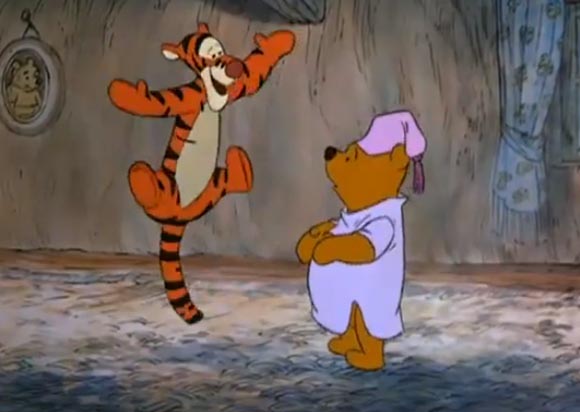
Sometimes when I’m animating, I recharge my creative batteries by watching some of my favorite scenes or pieces of animation. There’s a handful of animated pieces that I watch again and again, but only one that I always return to without fail. It blows me away every time I see it, and upon each viewing, I always seem to discover something new. After every viewing, it makes me strive harder and harder to become a better animator.
No surprise that this scene from Winnie the Pooh and the Blustery Day (1968) is a Milt Kahl scene. I may be one of the very few people who has had the gall to say something remotely negative about Kahl’s animation in the past, but I still think all the admiration for him and his work is completely justified. He could handle anything, and make it look and move beautifully. It’s a shame he wasn’t given more assignments like this one, because I feel that his more cartoon-oriented animation really stands out as some of his best.
While the entire four-minute sequence of Tigger in Pooh’s house is wonderful (great personality animation, dialogue, pacing, etc.), it’s the shot of Tigger bouncing around Pooh that stands out for me. The reason I love that scene so much is that it perfectly encapsulates all twelve principles of animation. In about 7 seconds, each principle is flawlessly showcased, some multiple times, and some intertwining and overlapping one another. As broad and over the top as it is, there’s layer upon layer of intricate elements that make the scene work. It’s a masterpiece of animation, but isn’t brought up too often compared to some of the other characters in Kahl’s career.
For starters, watch when Tigger first begins bouncing: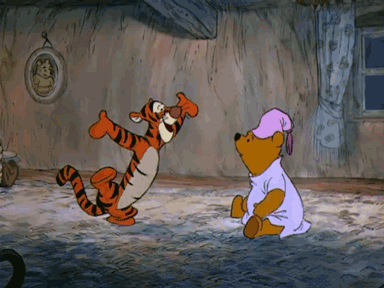
There’s little to no anticipation in his legs, but instead the anticipation is shown in the movement of his head going down before the take off. The tilt of his head, in relation to his arms, legs, ears and whiskers as he first jumps show a great use of arcs. Also notice the successive breaking of the joints on Tigger’s arms, from his shoulders to his elbows to his wrists, and the drag on his fingertips.
As he bounces in place, you can really feel the energy transferring through his body, from his head down to his tail and right back up to his head again, much like a wave action. The folds and wrinkles in his body as he squashes down not only tell us that Tigger is a well-worn toy with loose stuffing, but how much force and weight that Tigger is exerting with each bounce.
Now, Tigger begins to bounce in a circle around Pooh: 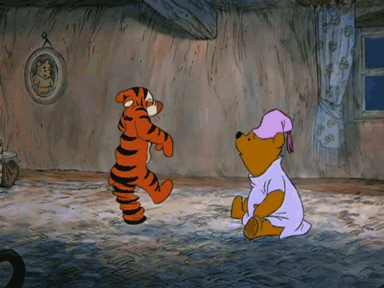
This is why Tigger’s stripes play such an integral role in his design. The stripes sell the idea that Tigger is not a flat drawing, but a three-dimensional living creature. His stripes wrap around the forms of his body and give the illusion of volume. So when Tigger is bouncing around Pooh, those stripes make it clear that Tigger’s body is turning away from us in perspective. Also notice the overlapping action on Tigger’s tail, and how it bends and swings at the kinked parts.
Tigger then jumps up and spins on his tail: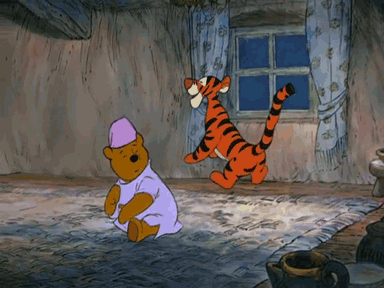
There’s so much going on in this one-second action. Tigger’s torso is twisting and contorting, his top half slightly delayed than his bottom half. Like before, his arms and legs following arcs, and his hands, ears and whiskers are dragging behind. And while all this is going on, he’s squashing and stretching on every bounce until finally easing into his final pose before making physical contact with Pooh and charging offscreen.
And throughout that entire scene, on every bounce, footstep and contact, Tigger is hitting every single beat in the song. Each of Kal’s key poses are appealing, with clear staging and strong silhouettes. Even the animation on Pooh, who takes a back seat in this sequence to contrast Tigger’s outlandish behavior is wonderfully done. It’s almost contradictory how Tigger moves. While he’s galumphing around the screen like a roughhouse, there’s a certain level of grace in his movements. And both Tigger and Pooh’s personalities are easily distinguishable, Tigger being confident and boisterous and Pooh being underplayed and submissive. Overall, a tour de force of animation.
Coincidently, Kahl was also animating Shere Kahn in The Jungle Book around the same time. They’re both tigers (Tigger loosely so), but look how drastically different in approach and execution they are from each other. Shere Kahn is restrained and more subtle—built and functioning like a real tiger, while Tigger is so full of energy and enthusiasm that he’s practically bursting at the seams, and is a completely graphic design. Compare them to Kahl’s caricatured tiger from the Goofy short Tiger Trouble twenty years earlier and you have some sense of how broad Kahl’s abilities were as an animator.
I would’ve loved to know Kahl’s opinion about his own work on Tigger. I know there’s plenty of information floating around about how he felt about Medusa, Shere Kahn, the Brers or any of the human characters he animated, but barely anything about his work on Tigger. If anyone has any insight about this, please share!
For those that want a closer look at this scene, here’s a video of it slowed down 500% with annotations:

By: Jerry Beck,
on 3/21/2013
Blog:
Cartoon Brew
(
Login to Add to MyJacketFlap)
JacketFlap tags:
Maya,
How-To,
CGI,
Educational,
Nina Paley,
David OReilly,
Rigging,
Blender,
Sita Sings the Blues,
The External World,
Add a tag
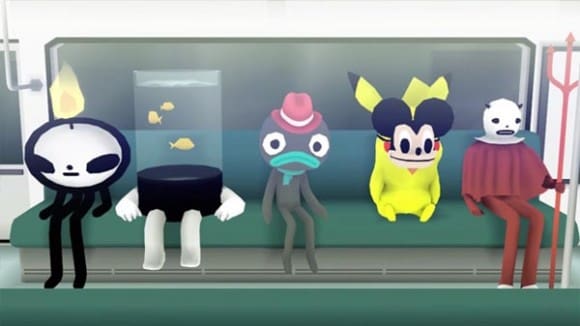
In what may be a first for a major award-winning animated short, filmmaker David OReilly has released all of the character rigs from his short The External World. OReilly follows in the footsteps of filmmakers like Blender Open Projects and Nina Paley who have also released animation production assets for the educational benefit of the community. Says OReilly:
You can use and modify them in any way you like as long as it’s for a non-commercial purpose. Showreels, short films, indie games, all that stuff is cool – just give credit. If it’s web based – include a link to my site. I’m releasing these without a how-to (or support of any kind) but it should be very straight forward. They are extremely low-weight and easy to animate with, all are compatible with versions of Maya after 2010.

By: sylvandellpublishing,
on 3/15/2013
Blog:
Sylvan Dell Publishing's Blog
(
Login to Add to MyJacketFlap)
JacketFlap tags:
trees,
biology,
Educational,
facts,
interesting,
Sylvan Dell,
Laurie Allen Klein,
Danna Smith,
Sylvan Dell Posts,
rubber,
Most Dangerous,
Children's Books,
literacy,
literature,
picture books,
science,
balloons,
Add a tag

Balloon Trees, the new title from Sylvan Dell, written by Danna Smith and illustrated by Laurie Allen Klein, reveals that the rubber that makes up balloons, balls, tires, shoes and many more things actually comes from trees! What other surprising things do you think trees give us?
The house you live in may be made from wood from trees; that’s obvious, but did you know that that house is filled with gifts from trees also? Do you like that your parents are less grumpy in the morning when they have their coffee? You can thank the coffee arabica tree for that, a 20 foot evergreen that grows in warm climates of the world. A cup of hot cocoa has made a long journey from cocoa trees along the equator to reach your kitchen. Maple syrup, cinnamon, fruits, nuts, and many more delicious items also come from trees.
Ever wonder how jelly candies get so goopy and great? Check the ingredients and you’ll find “gum arabic” in the list. Gum arabic is hardened sap from an acacia tree, and it’s used in foods like desserts to lend its goopy texture to them. It is also a key ingredient in glues, paints, and many other products that manufacturers want to make ‘slimy,’ ‘goopy,’ or ‘jelly.’
“Cellulose” is part of the ‘skin’ of trees, and when manufactured it can become “Rayon” clothing to make our own skin warmer. Cellulose is even an ingredient in foods and beauty products, lending its texture to them to make them ‘thicker’ or ‘heavier.’ When fat is removed from some “diet” or “fat-free” products, cellulose is often added to try and make the food ‘feel’ the same in a person’s mouth as before.
Trees also give us many kinds of medicine, such as aspirin, and even the first medicine for fighting malaria, “quinine.” If you’ve read our book, The Most Dangerous, you know how harmful the mosquito-spread disease malaria can be. Without the discovery of quinine from Peruvian trees, malaria would have harmed that many more people, and maybe even changed world history! Soldiers in WWII that fought in the Pacific jungles took quinine everyday, and it helped the building of the Panama Canal, and the Dutch and English to build their historical empires!
Of course, this is only the beginning of the gifts that trees give us. Say “thank you” back, by planting a tree, or at least reading a Sylvan Dell book under the shade of one!



I didn’t really know about animation smears until college. It was a time when my passion for animation had just kicked into high gear, and once I learned how to convert my DVDs into Quicktime files, the flood gates opened. I was like a kid in a candy store, scouring through hours of animation every day. As I looked through the cartoons, I began to discover some odd things occurring. A character would look perfectly fine in one frame, but for a few frames it would turn into an absolutely insane-looking mutant, before suddenly reverting back to normal form. Without any understanding of what these were, I had discovered smears.
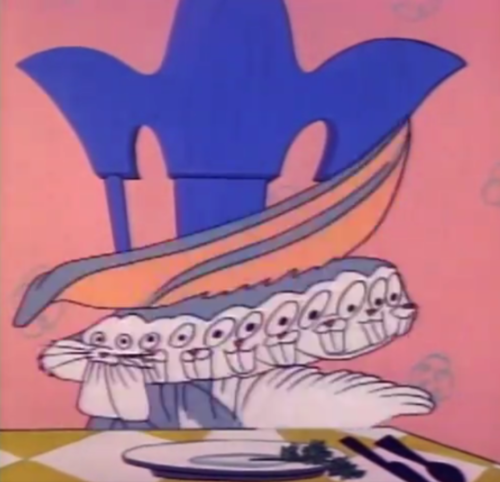
Around the same time, my second year animation teacher at the School of Visual Arts, Celia Bullwinkel, gave an in-class lecture about smears. She explained to us what they were, and what purpose they served. She screened a few smear-heavy Chuck Jones cartoons like The Dover Boys, showed some still-frame examples, and gave us an assignment to animate one ourselves. Of course, every budding animator thinks the same thing when they discover smears: “I CAN USE THESE FOR EVERYTHING!” But soon one learn that smears are best used judiciously; otherwise everything you animate looks like it’s made of Jell-O.
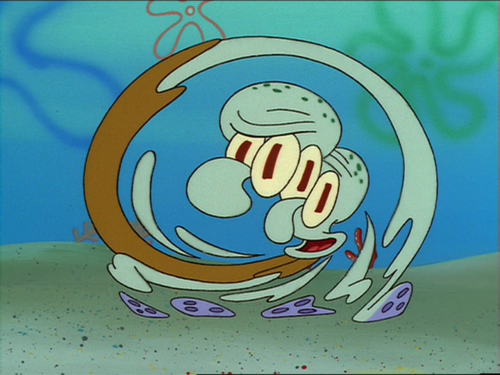
After some time passed, I began to appreciate smears outside of the context of animation, simply as still pieces of art. Somebody had to draw every one of these. It’s a truly creative and subliminal way of expressing artistic abilities, while at the same time serving the practical purpose of recreating an effect that happens naturally in live-action film.
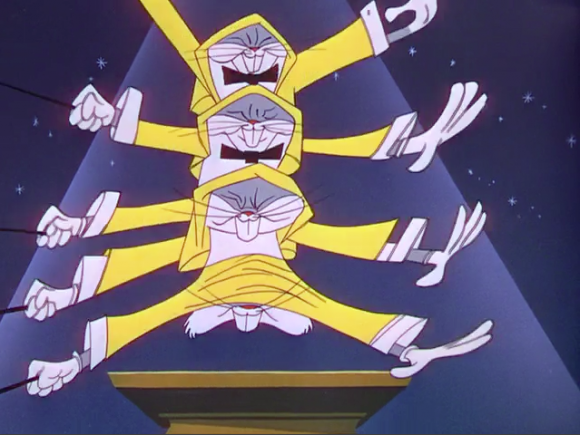
Eventually, my friends said I should go ahead and make a blog about them, probably so that I would stop pointing them out while we were watching animated films together. So two years ago, I launched Smears, Multiples and Other Animation Gimmicks, never imagining that it would become as popular as it did.
Almost immediately after setting up my first post, followers started pouring in. I opened up submissions so that followers could submit their own images, and people began submitting smears from anime, foreign animated films, television shows, commercials, video games, Newgrounds Flash films, and even smears they had animated themselves.
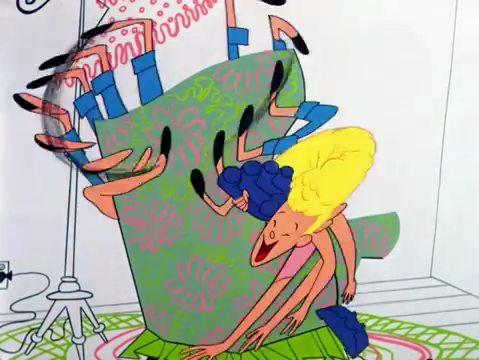
As of this writing, the Smears Tumblr has over 110,000 followers. I’m sure many followers simply find the images hilarious, but I believe there are plenty of us out there who think they are much more than just funny images. Either way, I’m glad people get as much of a kick out of these as I do. Perhaps a few young animation fans have been inadvertently enlightened on how much art, creativity and hard work goes into creating animation. That’s a good thing, I think.
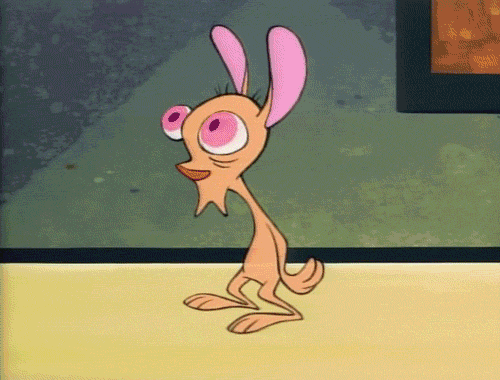

Coming soon: the iPad app version of Richard Williams’ indispensable The Animator’s Survival Kit. The publisher, Faber and Faber, hasn’t set a price or exact release date, but it’s being timed to roughly coincide with Williams’ 80th birthday next month.
Key features of the app will include:
- The entirety of The Animator’s Survival Kit Expanded Edition, optimized for the iPad.
- Over 100 animated examples from The Animator’s Survival Kit Animated DVD box set.
- Previously unreleased Circus Drawings animation from Richard Williams
- Silent Film Logo for the Pordenone Silent Film Festival.
- New video introductions by Richard Williams.
- Sensitive navigation, fading gracefully away when not needed, allowing users to focus on the lessons at hand.
- Break down and watch the animated examples frame-by-frame to see how they’re put together.
- Onion skin some animated examples to see the preceding and following frames.
Below are a couple stills from Circus Drawings, the new Richard Williams short that will be included on the app:


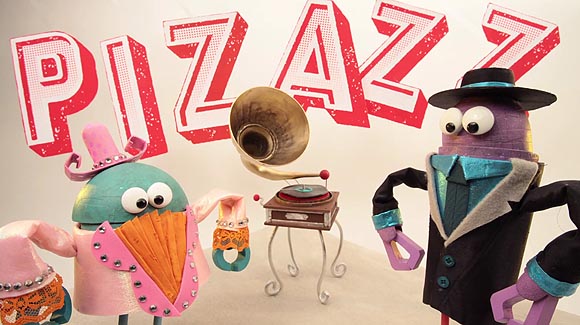
JibJab has completed the series of ABC videos that is part of their new children’s learning project StoryBots. The last video in the series—Z, of course—was directed by Max Winston, whose mastery of classic cartoon timing and movement is second to none among stop motion animators. [UPDATE: Max has posted behind-the-scenes photos from the short on his blog.]
When I was in LA last month, JibJab co-founder Evan Spiridellis gave me a sneak peek of the StoryBots material they’re producing. The StoryBots website doesn’t give much away, but some bits and pieces of concept art can be seen on their Tumblr. The company is busy producing a significant amount of interactive storybooks, games and animated shorts to support the StoryBots iPad app. Beginning this Spring, the app will be available for a flat monthly subscription fee of $4.99.
The thing that strikes me most about the whole StoryBots endeavor is the consistency of quality. JibJab uses a large crew—both in-house and freelancers around the globe—to create its StoryBots content. Working with such a large group of people has the potential to yield a mixed bag of results—for example, see the TED-Ed animated videos.
In JibJab’s case, however, there is a remarkable through-line that stretches across the entire StoryBots universe. This doesn’t mean that every StoryBots piece will wind up as a classic piece of children’s entertainment, but like the early Sesame Street, there is a sensibility of fun and creativity that binds the various parts of StoryBots together.
It’s the type of result that can’t be achieved overnight. Evan, who is the de facto creative director of StoryBots (I’m not sure what title he actually uses), does an incredible job of mixing and matching creative talents, casting the right crew for each segment, and then letting each person do what they’re best at doing. He credits the large amount of content they create for their e-cards division, which remains JibJab’s bread and butter, as preparing him for the demands of putting together StoryBots. At this early stage, the hard work is paying off, and StoryBots could become one of those rare children’s educational products that appeals to children and parents alike.

By: sylvandellpublishing,
on 2/1/2013
Blog:
Sylvan Dell Publishing's Blog
(
Login to Add to MyJacketFlap)
JacketFlap tags:
Children's Books,
reading,
groundhog day,
weather,
spring,
coloring page,
Educational,
Special Days,
prairie storms,
Sylvan Dell Posts,
woodchuck,
Add a tag
 What do John Dalton, Al Roker, and Punxsutawney Phil the Groundhog have in common? They’re all famous weathermen! Groundhogs, which also go by the name woodchucks, are ground squirrels related to chipmunks and prairie dogs. They live in the North East of the United States and in Canada, where they feed on wild grasses and insects and live in burrows they dig for themselves. Sometimes the tunnels that make up their homes can interfere with the homes of humans by making the ground under buildings unstable. Some farmers and homeowners get mad at Groundhogs for damaging their property. However, other people believe that Groundhogs provide a useful service for humans: they predict the weather!
What do John Dalton, Al Roker, and Punxsutawney Phil the Groundhog have in common? They’re all famous weathermen! Groundhogs, which also go by the name woodchucks, are ground squirrels related to chipmunks and prairie dogs. They live in the North East of the United States and in Canada, where they feed on wild grasses and insects and live in burrows they dig for themselves. Sometimes the tunnels that make up their homes can interfere with the homes of humans by making the ground under buildings unstable. Some farmers and homeowners get mad at Groundhogs for damaging their property. However, other people believe that Groundhogs provide a useful service for humans: they predict the weather!
In the 1800’s, German immigrants in Pennsylvania started a tradition where, every February 2nd, they watched the behavior of a special Groundhog to tell them how soon Spring would begin. They would gather around the weatherman-Groundhog’s burrow and watch as he emerged. If the day was sunny, the groundhog might see his shadow, become afraid, and retreat into his burrow. According to the tradition, this is his way of telling people that Winter will last for another six weeks. If the Groundhog doesn’t see his shadow and leaves his burrow, then Spring will come early! Instead of using graphs and images for his weather forecast, the Groundhog communicates with his emotions!
This tradition was “Candlemas” to the German immigrants, but now we know it as “Groundhog Day.” Every February 2nd, people still look to famous Weather-Groundhogs such as Punxsutawney Phil, Western Maryland Murray, and Chattanooga Chuck to tell them how soon spring will come. The weathermen-Groundhogs are never completely accurate with their predictions, but then again, neither are human weathermen!
Learn more about groundhogs in Prairie Storms by Darcy Pattison and click on the picture below to print this great coloring page by Kathleen Rietz.




By: sylvandellpublishing,
on 1/30/2013
Blog:
Sylvan Dell Publishing's Blog
(
Login to Add to MyJacketFlap)
JacketFlap tags:
kids,
history,
learning,
Education,
einstein,
science,
Educational,
light,
facts,
interesting,
Sylvan Dell,
teachable moment,
quantum,
whoa,
Science and World News,
pop tarts,
Add a tag

Quick! What’s behind you right now? Did you peek over to see desks, the wallpaper, students, books, or toys? Were those objects there even before you looked at them? Are they there now, even though you’re reading this instead of seeing them? As strange as it sounds, some scientists believe that nothing exists definitely until someone measures it, such as you did with your eyes and ears. These scientists work in a field of science called Quantum Mechanics.
In the early 1900s, smarty-pants scientists like Albert Einstein, Niels Bohr, and Werner Heisenberg studied, experimented and argued over the question of what light was made of. Light was very mysterious to scientists at the time, because in some experiments it acted like a wave, similar to the invisible radio and magnetic waves all around us. In other experiments though, light acted like a particle, a solid object like a Pop Tart, a textbook, a penny, a skyscraper… Anything that’s in one place and that weighs something is a particle. It didn’t seem to make sense for something to be an invisible wave and a solid particle at the same time, but in test after test, light was both! You might think it was time for these scientists to turn in their labcoats and get new jobs… this was too hard to figure out! Instead of giving up though, the scientists continued experimenting and studying the subject until they found a solution: light is a wave until it gets observed, then it becomes a solid particle!
This was huge news for scientists. If light acts like this, then other solid objects may not be so solid after all too. The scientists studying Quantum Mechanics presented this thought-provoking possibility: that that the world is actually a wave of possibilities until we observe it, then it becomes the solid place we can feel, touch, taste and smell. It’s a bit like hiding trash under your bed: if you can’t see it, it’s not there!


As we continue to feature wildlife rehabilitators this month on the Sylvan Dell blog, this week we meet Kim Johnson from The Drift Inn Wildlife Sanctuary. She shares with us the trials and tribulations of rescuing wild animals.
 Texan Kim Johnson often works with her veterinarian husband and a tiny volunteer group at her Drift Inn Wildlife Sanctuary in Driftwood to care for a wide variety of mammals, including raccoons, squirrels, deer, fox, skunks, even bobcats. “Every year is different and I never know exactly what to expect” says Kim, one of a small handful of licensed rehabilitators in her state, “During Hurricane Ike, 200 squirrels were delivered to my front door.”
Texan Kim Johnson often works with her veterinarian husband and a tiny volunteer group at her Drift Inn Wildlife Sanctuary in Driftwood to care for a wide variety of mammals, including raccoons, squirrels, deer, fox, skunks, even bobcats. “Every year is different and I never know exactly what to expect” says Kim, one of a small handful of licensed rehabilitators in her state, “During Hurricane Ike, 200 squirrels were delivered to my front door.”
Despite her hectic schedule caring for wild animals, many of them babies, for 14-18 hours a day, seven days a week, Kim never seems to lose her sense of humor. “If it’s native and it lives in Texas, it’s been in my house, and maybe even if it’s not native,” she quips.
In many of the pictures that Kim submitted for possible use in Animal Helpers, she is wearing a big smile and very heavy welder’s gloves. The grin is, of course, because Kim loves her job. The gloves are because she is smart and seasoned. After 33 years as a rehabilitator, Kim is keenly aware that those gloves are mandatory equipment for handling fuzzy babies that have big paws, sharp teeth, and claws.
Name: Kim Johnson
Name of organization/clinic: The Drift Inn Wildlife Sanctuary
State: Texas
Specialty/special areas of experience: Mammals, raptors
Years as rehabilitator/volunteer: 33 years
Busiest time of year: May-July
Number of hours you work per week during your busy season: 18+ hours a day 7 days a week
Number of volunteers in clinic: 4
Why did you become a rehabilitator/volunteer: For the love of nature and animals
Most rewarding aspect of rehabilitation: Release days and seeing an animal we thought would not pull through survive and be released!
 As a rehabilitator, what is the most common question you are asked? If I touched it, will the mother come back?
As a rehabilitator, what is the most common question you are asked? If I touched it, will the mother come back?
Having cared for wildlife for so long, Kim cheerfully tells wonderful stories about the creatures that have come through her clinic, such as: A 7-week-old bobcat came to us on Christmas Day. He was cute as a button, cute in the “I have claws and teeth and know how to use them” kind of way. For some reason, people still think that all little wild animals drink cow’s milk. (Unless they arecows, they do not do well on cow’s milk.) After getting his weight up, this bobcat soon started to fit right in with the rest of the crew. He ate mice in nanoseconds, soon was jumping up on everything and getting more mischievous by the day! Seven weeks later, it was time to move him to a larger facility. This bobcat had grown four times the size he was when we got him. He was ready to mingle with his own kind. We transferred him to a much larger facility outside of San Antonio where there are 12 other bobcats. He will be released onto a 1,000 plus acre refuge. We will miss him; but, as with all of our animals, we feel blessed to have them and to be able to give them the care they need for the time we do.
Favorite animal story: We got a call that an adult raccoon had his head stuck for the entire night and half of the day in a bird feeder in a tree. As I got there sure enough, he had wedged himself to where he could rest on the edge of the feeder as he contemplated his problems. I told the lady that I could save the coon but not the feeder. She suggested that they have a warning for purchasers of said bird feeder that it could also capture raccoons. I got on a ladder and proceeded to unscrew the feeder and remove it from the tree. So far so good. I quickly realized that the coon was not coming out of the feeder without a chisel or saw and some serious drugs (for the coon of course). I decided to put said coon and feeder in the back of the SUV and take him the eight miles down the road to the house where Dr. Johnson (Ray) could tranquilize him and we could then figure out how to release the raccoon from his feeder. Halfway home, I have visions of the coon releasing himself from the feeder and kicking my tail in the car all the way home. Luckily, for both of us he was quite stuck and we made it home. Ray was almost laughing too hard to sedate the bugger but we got it done and although he never completely passed out, he was docile enough to unscrew the rest of the feeder and chisel the wood from around his neck without so much as a scratch on him! He looked at us and groggily ran off without so much as a thank you.
What advice would you offer to children considering a career in wildlife rehabilitation?
Become a veterinarian who specializes in wildlife. There are few out there and more are needed!
 Remember Animal Helpers: Wildlife Rehabilitators is FREE for the month of October at www.sylvandellpublishing.com, or Read it on your iPad, by downloading the free app Fun eReader in iTunes and entering the code: 2WZ637 in the red box on the App Registration page.
Remember Animal Helpers: Wildlife Rehabilitators is FREE for the month of October at www.sylvandellpublishing.com, or Read it on your iPad, by downloading the free app Fun eReader in iTunes and entering the code: 2WZ637 in the red box on the App Registration page.



By: sylvandellpublishing,
on 10/8/2012
Blog:
Sylvan Dell Publishing's Blog
(
Login to Add to MyJacketFlap)
JacketFlap tags:
Educational,
rehabilitation,
animal rescue,
birds of prey,
rehabilitators,
animal helpers,
swainson Hawks,
books,
Education,
science,
Add a tag
Each book in the new photographic journal series, Animal Helpers, features different ways animals are being helped by experts, volunteers, students, interns, and even campers around our country. Through this unusual series, we  hope to bring recognition and awareness to the extraordinary animal helpers and nonprofit centers, clinics, sanctuaries, and rescue zoos in which they work. In the meantime, we will be using this blog to cheer on the work of even more of these unsung heroes, who dedicate their time, patience, and funds to helping save wild animals, one life at a time.
hope to bring recognition and awareness to the extraordinary animal helpers and nonprofit centers, clinics, sanctuaries, and rescue zoos in which they work. In the meantime, we will be using this blog to cheer on the work of even more of these unsung heroes, who dedicate their time, patience, and funds to helping save wild animals, one life at a time.
Animal Helpers Out West – Swainson’s Alert with Judy Scherpelz, Executive Director, and Christine Thomas, Volunteer, Rocky Mountain Raptor Program, Fort Collins, CO
www.rmrp.org
On any given day, Judy Scherpelz, Executive Director of the Rocky Mountain Raptor Program (RMPR) in Fort Collins, Colorado, might be worried about the owls, hawks, falcons, and other birds of prey who are in the clinic because of car strikes, drought, fire, twine entanglement, electrocution, and the dreaded West Nile Virus.
Fierce as they seem, even raptors are prone to forces of man and nature.
This year, with the worst drought in history alongside some mighty big fires, birds of prey have come into RMRP in record numbers.
“This has been a really hard summer,” remarks Judy, “Young birds are so hungry that they’ll go after road kill that they normally would not go after so these inexperienced youngsters are coming in starving and injured.”
 Working long hours, seven days a week, Judy and her small but dedicated, staff rush out to rescue the birds and give them a second chance at freedom. The youngest birds are fed and their wounds are treated as needed. Eventually they attend “mouse school,” where they learn to eat live prey, and “flight school,” where they learn to use those big wings. Now that its fall, RMRP is graduating some of their raptors, including the Swainson’s Hawks, a western raptor related to Red-Taileds.
Working long hours, seven days a week, Judy and her small but dedicated, staff rush out to rescue the birds and give them a second chance at freedom. The youngest birds are fed and their wounds are treated as needed. Eventually they attend “mouse school,” where they learn to eat live prey, and “flight school,” where they learn to use those big wings. Now that its fall, RMRP is graduating some of their raptors, including the Swainson’s Hawks, a western raptor related to Red-Taileds.
In fact, by late summer, RMRP staff is officially on “Swainson Alert.”
Like other hawks, Swainies migrate from the U.S. to their wintering grounds in Argentina, where they are known as “grasshopper hawks.” (Those hopping insects are their favorite food.)
What is unusual about these medium-sized hawks is the numbers in which they congregate and the incredibly long distance that they migrate. In Colorado, Swainies gather in huge groups—100 to 500 birds at a time—called kettles. “That term comes from the resemblance to the smoke coming out of a kettle,” explains Judy, “As the birds rise up into the thermals in the sky, they look like smoke coming out of a kettle.” The birds then migrate over 6,000 miles in eight weeks, flying almost 135 miles a day. And, by the time they arrive at the isthmus of Panama/Mexico, there may be thousands of Swainson’s Hawks in a kettle, notes Judy.
 Out west, baby Swainies hatch in June. By migration time, they are only three months old. They might be adult size but “they’re young and dumb,” laughs Judy. “Young birds need adult supervision during migration,” she explains, “The older birds know where to feed and how to find food; and, they’ve been to Argentina, so they know the route.”
Out west, baby Swainies hatch in June. By migration time, they are only three months old. They might be adult size but “they’re young and dumb,” laughs Judy. “Young birds need adult supervision during migration,” she explains, “The older birds know where to feed and how to find food; and, they’ve been to Argentina, so they know the route.”
An important part of releasing young Swainson’s Hawks, then, is to find the kettles so that the young birds can join their elders. The youngsters cannot be released on their own; they will starve.
So, exactly how does one find a kettle in Colorado?
Ask longtime RMRP volunteer Christine Thomas.
Each August, she and her husband, Michael, spend their spare time driving a truck down backcountry roads in the  grasslands to search for kettles. “There is no memo from the birds,” jokes Christine, “So, we get out of town on dirt roads and we look high. We look low. We might drive 120 miles a day looking for them for five days to a week.”
grasslands to search for kettles. “There is no memo from the birds,” jokes Christine, “So, we get out of town on dirt roads and we look high. We look low. We might drive 120 miles a day looking for them for five days to a week.”
Because the Thomases are avid birders, they have traveled these unpaved roads and rural parts of their county a lot looking for raptors. Christine has learned what the birds like—including grasshopper-ladened alfalfa plantings and bathing in puddles from irrigated fields. She often locates plots with water, even those that have pivot sprinklers. Over the years, she and Michael have learned to find out when and what farmers are planting and cutting. They spend a lot of time talking with landowners so that they can learn more about the birds’ habits. They look up, at telephone poles and possible perching spots for the birds; but, they know they have to eventually look down. The hungry birds will be on the ground, eating grasshoppers.
Christine is in awe of these hawks, which she likens to long distance runners. “They spend one-third of their lives migrating all the way to Argentina and then back. They are built for distance and endurance.”
“The first time we saw a kettle of hawks, it took our breath away,” says Christine, “There were so many of them, maybe 500, and when they took off, it was so awesome, like Christmas Day!”
 Once the Thomases find the flocks, they hurriedly call the center. Staff then quickly gathers and bands all releasable Swainson’s Hawks at the center, places them into carriers, and races them back to the location, a drive that often takes at least an hour. Prior to release, the Thomases do ensure that the location is a safe spot to release the hawks, preferably in a location without fences or traffic.
Once the Thomases find the flocks, they hurriedly call the center. Staff then quickly gathers and bands all releasable Swainson’s Hawks at the center, places them into carriers, and races them back to the location, a drive that often takes at least an hour. Prior to release, the Thomases do ensure that the location is a safe spot to release the hawks, preferably in a location without fences or traffic.
Fortunately, the Thomases have gotten quite good at deciphering the clues to find the kettles. If the hawks miss this “great escape” and have to overwinter with RMPR, the care is expensive. The hawks eat three to four mice per day at a cost of about $1 per mouse. Not including labor, the cage, or other raptor necessities, the expenses quickly add up.
This year, RMRP released 16 Swainson’s Hawks (which includes three overwintered from last year); and will overwinter nine.
 For more information about RMRP, please visit their website, www.rmrp.org.
For more information about RMRP, please visit their website, www.rmrp.org.
Thank you to Jennifer Keats Curtis author of Animal Helpers: Wildlife Rehabilitators for introducing us to Judy, Christine and the entire staff at RMRP. They are doing wonderful work for these beautiful hawks.


View Next 25 Posts


























































So glad you were able to save the remainder ducklings. A rescue like that can really take a large chunk from your day. Way to go for being willing to stop your regular hustle and bustle for those sweet ducklings. As a kid, I spent many hours with my father herding our baby goats back inside their fenced home. It taught me patience and compassion. Thank you for sharing your story.